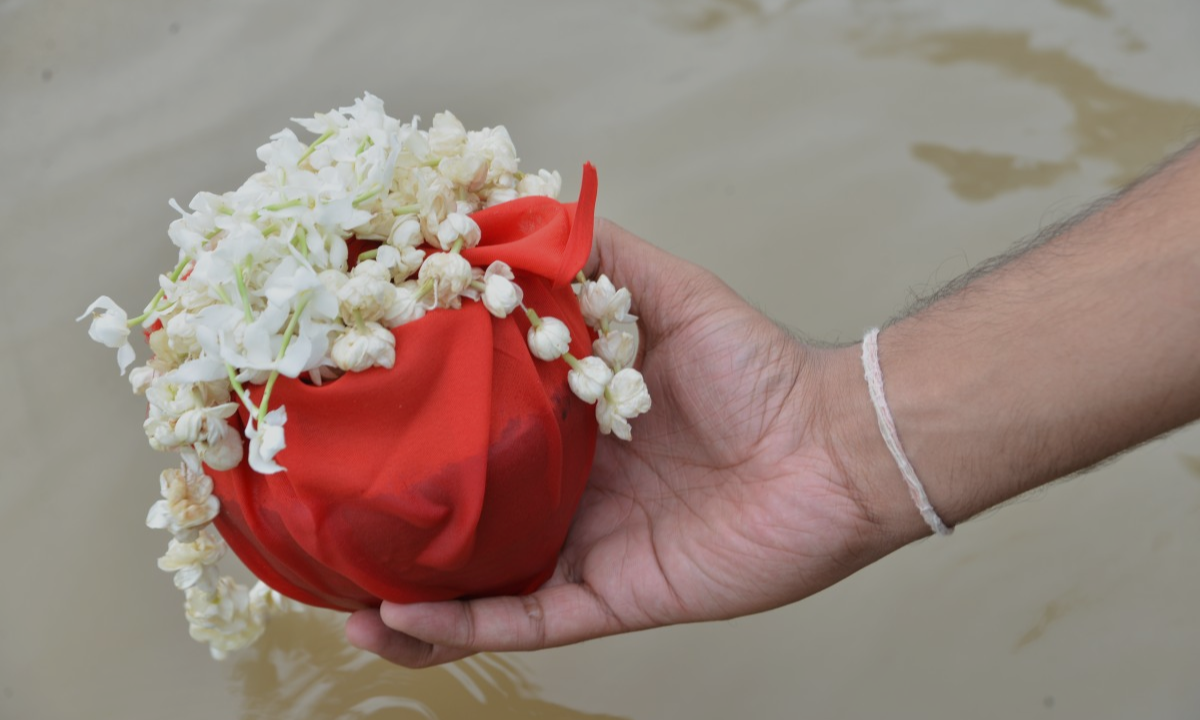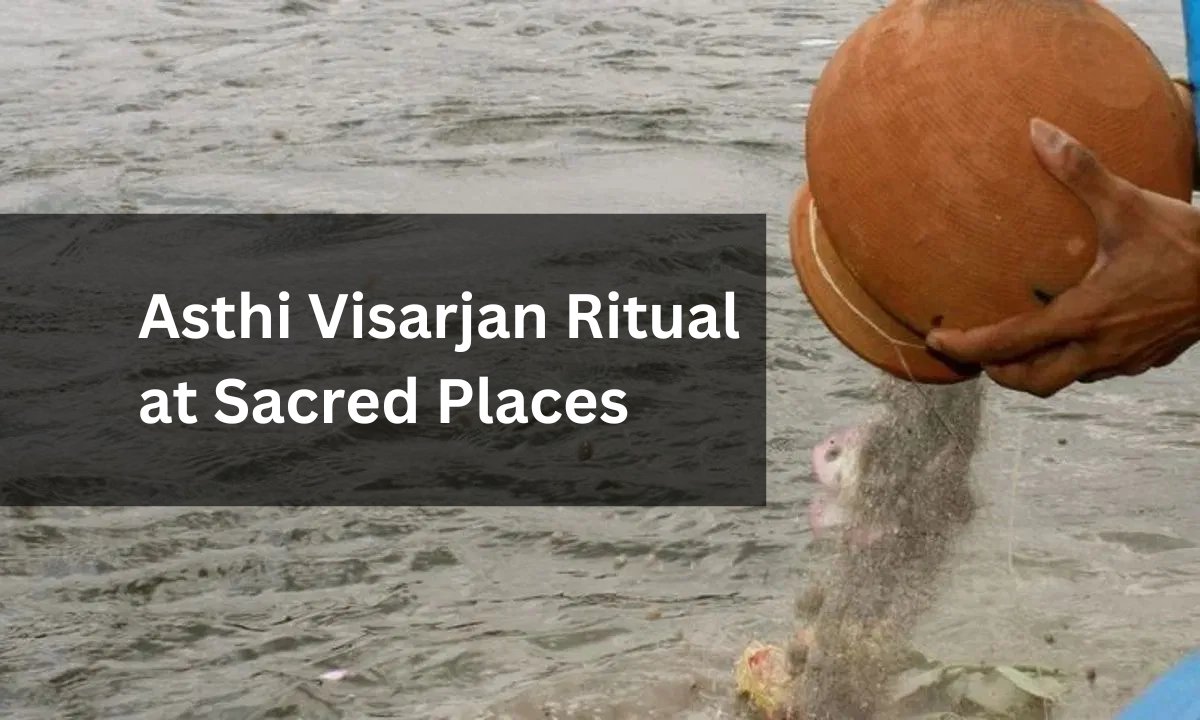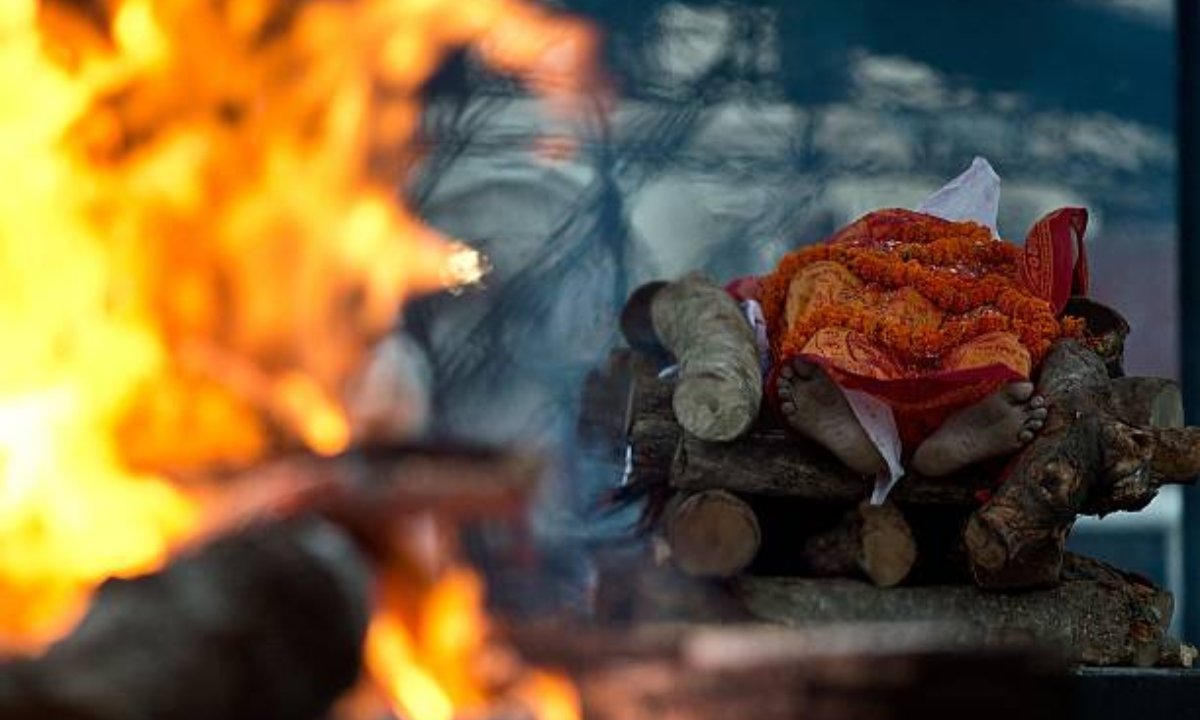Asthi visarjan represents a sacred funeral ceremony that helps departing souls get peace and achieve liberation (moksha). The Hindu religious tradition defines “Asthi” as cremation remains following a funeral and explains “visarjan” as the act of submerging bones and ashes into sacred rivers or water sources.
If you have recently lost a loved one and wish to complete their last rites, it’s natural to have questions. How do you prepare for it? Where can you perform it? What does the process involve?
In this article, we’ll guide you step by step through how to arrange the asthi visarjan ritual at sacred places, while also addressing some important asthi visarjan rules and the exact asthi visarjan procedure to follow.
Significance of the Asthi Visarjan Ritual

Asthi visarjan ritual represents something greater than its religious manifestation. According to Hindu beliefs, asthi visarjan stands as an important ritual because it gives departed souls the chance to reach peace and freedom from reincarnation. Through this ritual, people show belief that physical bodies dissolve into nature but the immortal soul progresses toward future destinations.
Most Hindus select rivers Ganga, Yamuna, or Godavari because these holy water bodies cleanse and purify the departed soul. People select the Ganga River at Varanasi along with Haridwar as their main destination because these sites hold spiritual significance and historical value.
How to Decide the Location for Asthi Visarjan
Choose a Sacred Place
The arrangement of asthi visarjan starts with picking a suitable location. The Ganges together with Yamuna and Brahmaputra along with the Godavari and Kaveri rivers serve as preferred sacred waterways. Rivers remain the primary selection yet water bodies at Pushkar Lake in Rajasthan, Pashupatinath Temple in Nepal and Rameshwaram in Tamil Nadu represent additional options for people performing Asthi Visarjan.
The holy places of Varanasi and Allahabad (Prayagraj) and Haridwar and Rameshwaram provide dedicated services to perform this ritual in an organised manner.
Consider Accessibility
In your decision, you need to think about practical matters including how easy it is to access the spot and all the available facilities close by and if you will need to stay in lodgings. Elderly relatives and far distances require special attention to planning an Asthi Visarjan.
Consult a Family Priest
Take advice from your family priest before making a final choice regarding your destination. The priest will offer recommendations according to the specific practices and beliefs of your family heritage.
Essential Steps to Arrange an Asthi Visarjan Ritual
A complete guide for running a smooth Asthi Visarjan ritual follows this sequence:
1. Collect the Ashes After Cremation
People gather the ashes from the cremation in a container. Working with the crematorium caretaker will allow you to collect the remains properly and then clean them according to the ritual requirements.
2. Confirm the Asthi Visarjan procedure requirements at the site you plan to perform the rites.
Keen observational research is necessary before this memorial practice since different spiritual sites have their own unique asthi visarjan procedures. You must arrive early before the ceremony starts in specific locations along with the following recommended time limits and required offerings for asthi visarjan.
3. Make Travel and Accommodation Arrangements
Plan your journey to the distant Asthi Visarjan site along with accommodation bookings for the specific location if your hometown does not provide easy access. Make bookings in advance, especially if it’s a popular destination like Haridwar or Varanasi, as these are often crowded.
Many travel companies and ashrams provide all-in-one packages that include transport, accommodation, and the required materials, along with the assistance of priests.
4. Gather the Required Materials
To perform the ritual the urn with the remains is the essential element. In addition, you may need:
- A clean white cloth
- Flowers and garlands
- Ghee (clarified butter)
- A diya (lamp)
- Sandalwood paste or powder
- Coins (for the ritual offerings)
- Rice or other grains
Stocking up materials for the ritual depends on family customs as well as the location where the asthi visarjan takes place. The materials required for asthi visarjan procedures can be obtained easily from applicable shops operating near the sacred site.
5. Perform the Asthi Visarjan Procedure
After reaching your holy destination you should find either a priest or pandit who will lead you through the right asthi visarjan process. You will be guided to do the procedure with the priest before the ashes are dispersed in the river.
A person performs asthi visarjan procedures by immersing ashes alongside flowers during the chanting of mantras aimed at granting the soul peace and liberation. Family members participate in a religious cleansing ritual by dipping into the sacred water after the ash immersion.
Key Points to Remember When Performing Asthi Visarjan
1. Respect Local Customs
The ritual requires complete observance of local beliefs as well as area traditions. Obtain guidance from the local priest concerning the rituals while seeking clarification about procedures when you remain unclear to prevent mistakes. Every ritual including easy and complex ones holds a special significance that requires devoted performance with full awareness.
2. Maintain Cleanliness
You should avoid the disposal of non-biodegradable waste into the water stream at all times. Ashes together with flowers and natural biodegradable materials remain traditionally acceptable whereas plastic and synthetic items must be strictly avoided.
3. Be Mindful of Spiritual Practices
The tradition of performing asthi visarjan requires a serene atmosphere for completion. Avoid brief and hectic procedures along with any disruptive actions during this time.
Asthi Visarjan Rules to Follow
The regular asthi visarjan procedure contains several rules that need to be followed.
- The cremation ashes are the only acceptable substance for participation in the immersion ritual.
- The traditional role of performing this ritual belongs to the closest male relative who is usually the elder son.
- According to tradition, the funeral ritual should happen during days chosen by a priest or astrologer as per auspicious ‘tithis’.
- Some rivers and places have their spontaneous behavior. Comply with fixed instructions during the ritual ceremony every time.
The Significance of a Priest at the Ritual
The participation of the community priests is indispensable in the correct performance of the asthi visarjan ritual. They also help in simplifying the asthi visarjan procedure for those who are unfamiliar with it. It’s customary to offer a dakshina (donation) to the priest after completing the ritual.
Conclusion
The asthi visarjan is a traditional ceremony, whose purpose is to honour and let go of a dearly loved soul. You may assist your beloved one to gain peace and freedom after death by choosing a place of reverence, picturing the prescribed rules of asthi visarjan, and performing the correct asthi visarjan procedure.
Throughout this process, however, it is shown as it is possibly the one most overpowering of the emotional burdens a person has to face in his lifetime with faith and carefulness to be performed peacefully and with meaning. The ritual of asthi visarjan allows the relatives of the departed souls to feel the essence of closure not only through spiritual beliefs but also emotionally.
To the families, Beleiv is a reliable name that provides comprehensive cremation services in Bangalore and takes care of their entire requirement through scattering ashes at sacred places (visarjan ritual) by arranging all the support.




